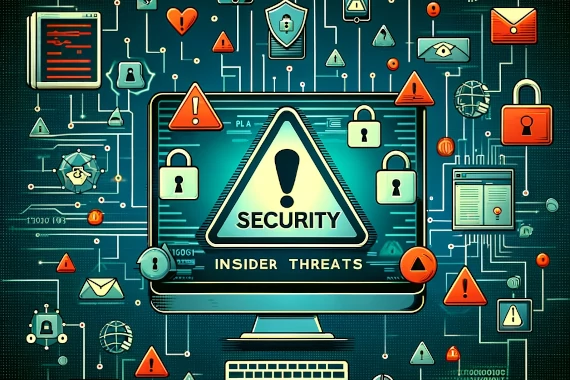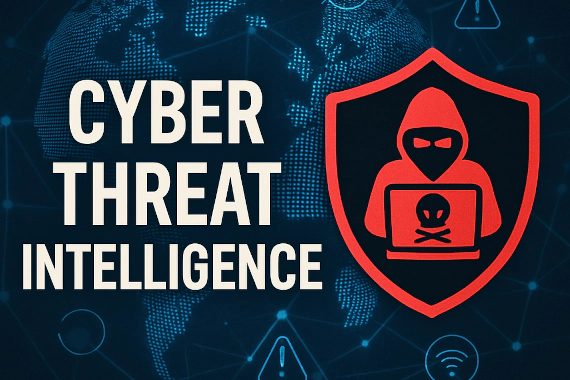FACT: Data breaches caused by malicious insiders cost organizations 9.5% more than the average cost of a data breach.
To make matters worse, insider threats make up 60% of all data breaches (ID Watchdog.
Insider threats are a serious threat to any company.
In this guide, we’ll cover everything you need to know about insider threats, as well as the best ways to prevent them.
What Is an Insider Threat
An insider threat is a security risk that originates from within the organization. It involves individuals who have legitimate access to the organization’s systems, data, or premises, such as employees, contractors, or business partners, who intentionally or unintentionally misuse their access to harm the organization. This can include actions like stealing intellectual property, sabotaging systems, or facilitating external attacks.
Types of insider threats
There are three types of insider threats. Each type poses a unique challenge in terms of detection and prevention:
- Malicious Insiders: These are individuals who intentionally exploit their access to the organization’s resources to steal information, sabotage systems, or conduct other harmful activities. Their motives can vary, including financial gain, revenge, or ideological reasons.
- Negligent Insiders: These are employees or associates who unintentionally cause harm to the organization through careless actions or lack of awareness. Examples include falling for phishing attacks, sharing sensitive information without proper authorization, or misconfiguring systems.
- Compromised Insiders: These are current employees whose credentials or systems have been hijacked or compromised by external attackers. The attackers then use these compromised accounts to carry out malicious activities within the organization. While the insiders themselves may not have malicious intent, their compromised accounts pose a significant security threat.
Malicious Insider Threat Indicators
Threat indicators are behaviors or actions that suggest an insider is engaged in harmful activities. It’s important to note that these indicators should be evaluated in context and in conjunction with other information. Organizations should have a process in place to investigate potential insider threats appropriately.
Some common indicators include:
- Unusual Access Patterns: Accessing sensitive information or systems at odd hours or from unusual locations, especially when it is not part of the individual’s normal job responsibilities.
- Excessive Downloads or Copying: Downloading or copying large volumes of data, especially sensitive or confidential information, without a legitimate business need.
- Unauthorized Installation of Software: Installing unauthorized software, especially remote access tools or other applications that could be used for malicious purposes.
- Attempts to Bypass Security Controls: Attempting to bypass security measures, such as using unauthorized devices, disabling security software, or seeking to elevate privileges without authorization.
- Frequent Policy Violations: Repeatedly violating company policies, especially those related to information security and data protection.
- Unexplained Financial Gain: Sudden, unexplained wealth or financial gain, which could indicate selling company secrets or engaging in other illicit activities.
- Expressing Discontent or Grudges: Voicing dissatisfaction with the organization, expressing anger towards coworkers or management, or making threats, which could indicate a motive for retaliation.
- Unusual External Communications: Frequent communication with competitors, unauthorized external entities, or known threat actors, which could indicate espionage or collusion.
- Concealing Activities: Using encryption or other methods to hide activities, deleting logs, or covering tracks in a way that is inconsistent with normal job functions.
- Resistance to Security Policies: Showing resistance or pushback against security policies, training, or audits, which could indicate a desire to operate without oversight.
Best practices for responding to an insider threat
Responding to an insider threat requires a careful well-coordinated approach to minimize damage and prevent future incidents. Here are some best practices:
- Establish a Response Plan: Develop and maintain a comprehensive insider threat response plan that outlines roles, responsibilities, and procedures for addressing potential threats.
- Assemble a Response Team: Form a cross-functional team, including representatives from IT, security, human resources, legal, and management, to manage the response to an insider threat.
- Early Detection and Monitoring: Implement systems and processes for early detection and continuous monitoring of suspicious activities or behavior that may indicate an insider threat.
- Investigate Thoroughly: Conduct a thorough investigation to gather all relevant information and evidence. Use digital forensics and other investigative techniques to understand the scope and impact of the threat.
- Contain the Threat: Take immediate steps to contain the threat and prevent further damage. This may include revoking access privileges, isolating affected systems, or taking legal action.
- Communicate Effectively: Maintain clear and open communication with all relevant stakeholders, including management, employees, and external partners. Be transparent about the situation while protecting sensitive information.
- Follow Legal and Regulatory Requirements: Ensure that all actions taken in response to the insider threat comply with relevant laws, regulations, and company policies.
- Provide Support: Offer support to affected individuals, including employees who may have been inadvertently involved or impacted by the insider threat.
How to prevent an insider attack
Protecting against insider attacks requires a multi-layered approach that involves a combination of technical controls, organizational policies, and employee awareness. Here are some best practices:
- Background Checks: Conduct thorough background checks on employees, contractors, and vendors to identify potential risks before granting access to sensitive information.
- Least Privilege Principle: Implement the principle of least privilege by ensuring that employees have only the minimum level of access required to perform their job functions. Regularly review and adjust access rights as needed.
- User Monitoring and Anomaly Detection: Implement user and entity behavior analytics (UEBA) tools to monitor user activities and detect anomalous behavior that may indicate an insider threat.
- Data Loss Prevention (DLP): Implement DLP solutions to monitor and control the transfer of sensitive information, preventing unauthorized access or exfiltration of data.
- Access Controls and Segmentation: Use access controls and network segmentation to limit the reach of potential bad actors and restrict access to critical systems and data.
- Secure Authentication: Implement strong authentication methods, such as multi-factor authentication (MFA), to prevent unauthorized access to critical assets and data.
- Regular Audits and Reviews: Conduct regular audits and reviews of user activities, access rights, and system configurations to identify potential security gaps or misuse.
- Training and Awareness: Provide regular training and awareness programs for employees to educate them about the risks of insider threats and the importance of following security policies and reporting suspicious activities.
- Whistleblower Protection: Establish a secure and confidential reporting mechanism for employees to report suspicious activities or concerns about insider threats, with protections in place for whistleblowers.
- Legal and Contractual Measures: Use legal and contractual measures, such as non-disclosure agreements (NDAs) and employment contracts, to bind employees, contractors, and vendors to confidentiality and security obligations.
How Breachsense helps minimize insider threats
As we mentioned earlier, 60% of all data breaches are caused by insider threats.
Compromised insiders make up a significant part of that number.
Last year alone, over 343 billion credentials were leaked via malware-infected devices.
If your security team needs visibility into your organization’s leaked data, book a demo to see how Breachsense can help.



